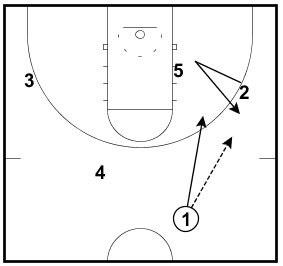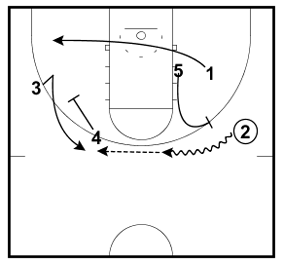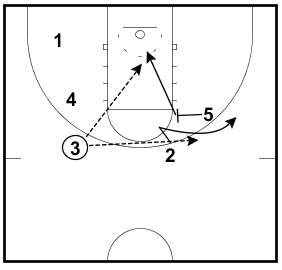New Misdirection Play to Get Your Shooters and Post Players Wide Open Looks
This play came from Oklahoma State men's basketball team when they played Oklahoma on 1/9/12.
Some coaches avoid flare screens because of the high-risk cross court pass that accompanies the flare screen. However, with a little creativeness as demonstrated in this play, you can shorten the distance on the pass and still set a successful screen to get a wide open look.

2 v-cuts and 1 passes to 2. 1 starts their cut through the lane that will end in the opposite corner.

5 sets a ball screen for 2.
At the same time, 4 sets a down screen for 3.
1 dribbles off of the screen and passes to 3 who is coming towards the ball.

5 turns and sets flare screen. 2 flare cuts.
Usually after you pass to 2 on a few flare screens, 5 will be wide open on the slip.
3 passes to 2 or 5.
3 can dribble towards 2 to shorten the distance on the pass as well.
What do you think? Let us know by leaving your comments, suggestions, and questions...
|
||||||||||||||||||||||||




 Facebook (145k Followers)
Facebook (145k Followers) YouTube (152k Subscribers)
YouTube (152k Subscribers) Twitter (33k Followers)
Twitter (33k Followers) Q&A Forum
Q&A Forum Podcasts
Podcasts